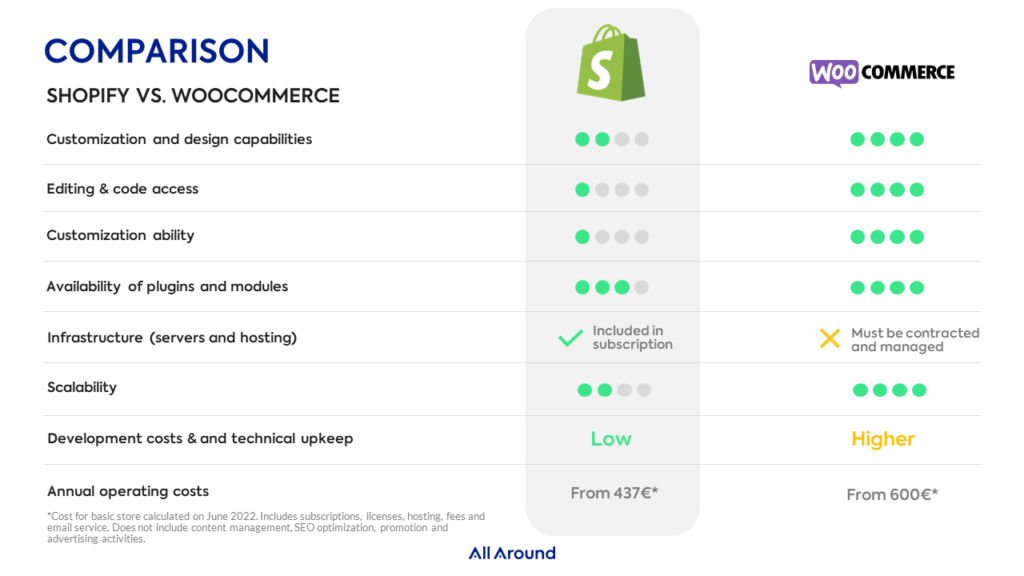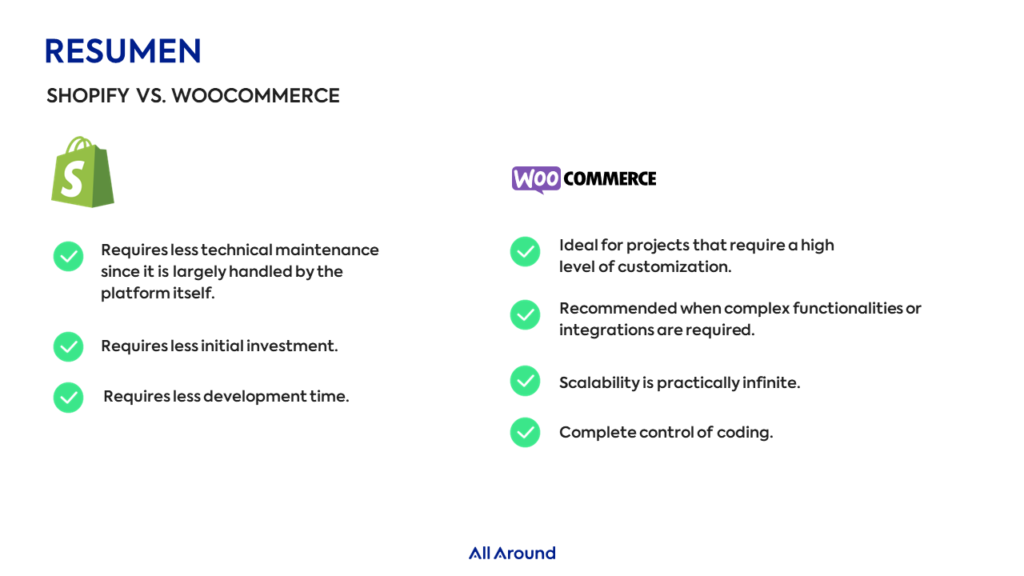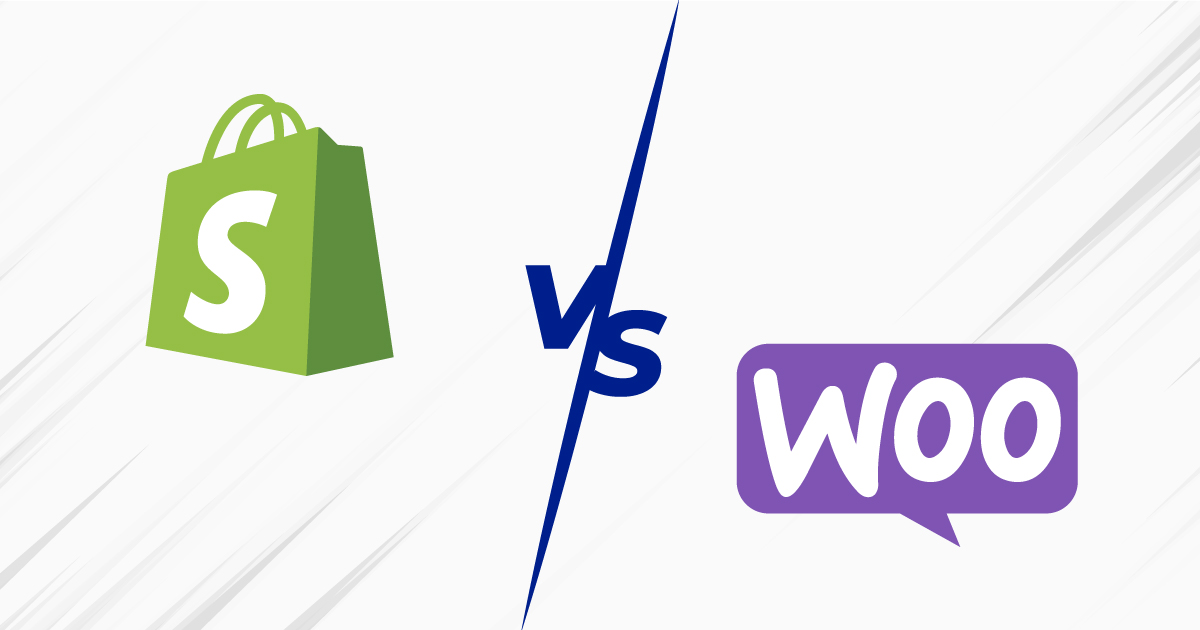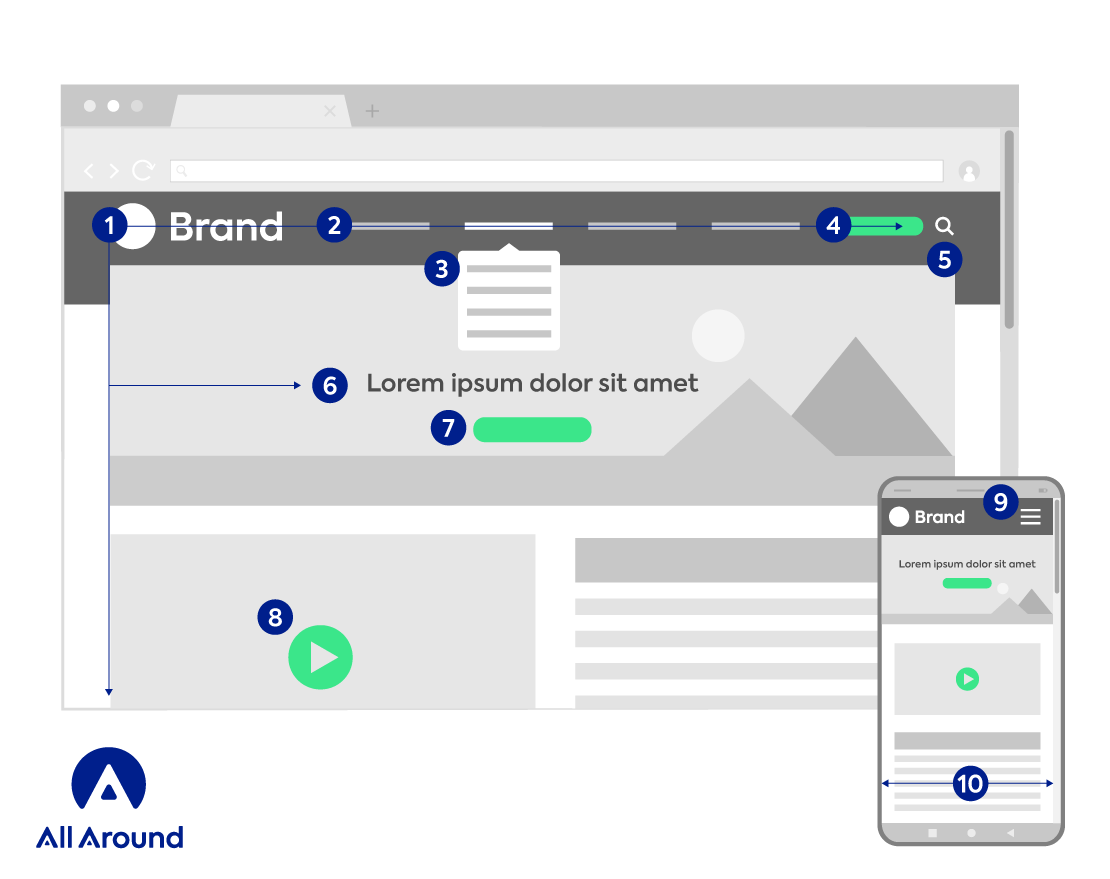Which platform should I choose for my online store: Shopify or WooCommerce?
If you are thinking of creating an online store and don’t know which platform to use, here is a comparison between Shopify and WooCommerce, the two leading platforms worldwide. Each has its pros and cons, so it is important to carefully evaluate your needs before choosing a solution.
Shopify
Shopify is an all-in-one cloud-based platform that offers a wide range of features and tools to help you create and manage your online store, prioritizing the rapid development of online shops without you having to worry about technical aspects. We give you the keys to how Shopify works:
Shopify subscription and prices
Shopify offers several subscription plans with different features and pricing. From the basic plan to advanced plans, Shopify offers an option for all budgets and requirements.
The cheapest plan has an annual billing cycle with a monthly fee starting at €27 that varies depending on the number of user accounts you need to manage your online store. However, this baseline price does not include third-party apps and tools, so your costs will likely increase as your shop grows.
Infrastructure (servers and hosting)
Luckily, Shopify hosts and manages these basics for you. You don’t have to worry about hosting and if you want, you can get a domain without leaving the platform or worrying about redirects or DNS. Shopify also has built-in security, such as 2FA, SSL certificate or suspicious activity logs.
Customization and design capabilities
Shopify offers a wide range of free and paid themes to customize the look and feel of your online store, although editing capabilities are limited. By their own admission…
This platform gives preference to speedy creation of online stores rather than customization. Shopify provides more than a hundred themes, including multiple free templates (11) to give you a starting point.
Usability
Shopify is known for being an intuitive and easy to use tool, even for those with no previous experience in creating an online store. Shopify has a fairly simple interface that will allow you to edit your content easily, and it is quite intuitive—you won’t need any technical programming knowledge.
On the other hand, code editing, and access is limited: you can edit your chosen theme’s code by using a specific Shopify template language: Liquid.
You also won’t be able to implement any of your own functionalities or design and will have to stick to what Shopify allows. Fortunately, their store and template models adapt to all types of products: physical, digital, subscriptions, memberships, etc.
Availability of plugins and modules
Within the Shopify Marketplace, you will find just about any application you need for your online store. In addition, there are several practical integrated modules for online store management and promotion such as:
- Accounting
- Product supply
- Marketing and advertising
- Sales channels
- Shipping and delivery
- Operations and results metrics
If you require additional functionalities, you will find that Shopify and third-party plugins are usually freemium or paid and price will vary depending on your subscribed plan.
Scalability
Shopify is a scalable platform that can grow along with your online store, making it a good choice for both small and larger businesses.
While it is true that Shopify offers the ability to scale your store as it grows and expands, scalability can be limited by the plan features, themes and plugins available. Also, keep in mind that there are fewer Shopify developers compared to other platforms, such as WooCommerce.
Despite this, Shopify takes care of all the technical aspects of your online store, which means you won’t have to worry about infrastructure or security. However, it is important to keep in mind that increasing the scale of your store will result in higher monthly costs.
Payment gateways
There are over 100 payment solutions to choose from and installing a gateways is a relatively simple process in Shopify. On the other hand, commissions are higher, and you will pay an additional transaction fee if you choose a payment gateway other than Shopify Payments.
Support
The Shopify Help Center provides support as you learn to use the platform. They offer documentation and videos to answer all your questions:
- Community forums
- Help center
- Direct contact with customer support
You can contact support through an email ticketing system, direct chat, social media and 24/7 phone support in selected countries.
Shopify: our opinion
Shopify is a complete and comprehensive platform for creating and managing your online store, with a wide range of features and tools to help you succeed online.
Pros:
- Easy to use: Shopify is known for being an intuitive and easy-to-use platform for online store creation and management.
- Built-in hosting: Shopify offers hosting for your store, so you don’t have to worry about server setup and maintenance.
- Apps and add-ons: Shopify has a wide range of apps and add-ons available to include additional features in your online store.
- Security: Shopify is a secure platform that keeps your data up to date and protects your online store from potential threats.
Cons:
- Cost: Shopify can be more expensive than other platforms, especially if you want to add additional features like apps and plugins.
- Limited customization: Although Shopify offers a wide range of themes, it can be limited in terms of online store personalization.

WooCommerce
What is WooCommerce? It is a plugin for WordPress, the most widely used open source content management system in the world, which allows you to create and manage your online store in an easy and customized way.
Subscription
None. Both WordPress and WooCommerce are completely free.
The initial cost of creating a WooCommerce store is lower than that of a Shopify store, and you don’t pay fixed commissions per sale. On the other hand, the initial cost can be increased by the additional plugins we need. Even so, the creation and maintenance will be cheaper.
Infrastructure (servers and hosting)
WooCommerce is self-hosted, so you will have to take care of buying and configuring web hosting, domain and SSL certificate to get your online store up and running. It may increase the initial budget but will also give you a lot more flexibility which will be beneficial in the long run as it is scalable.
Customization and design capabilities
WooCommerce allows you to customize the look and feel of your online store through the use of WordPress themes and additional plugins. The ability to customize design is unlimited, but you will also have to take care of updating core versions and plugins as they are released, as well as backups and security for your online store.
Usability
WooCommerce is an easy tool for those familiar with WordPress, but it may require a little more time and technical knowledge to set up and manage your online store.
Availability of plugins and modules
WordPress has more than 50,000 free and paid plugins. Keep in mind that the filter WordPress applies to plugin publishing is much less restrictive than Shopify, so you’ll have to watch out for any incompatibilities that may arise.
WooCommerce has a wide range of plugins and apps available to add additional features to your online store, such as payment gateway integration, shipping management and search engine optimization.
Scalability
WooCommerce´s scalability is unlimited and allows you to add as many products, features, integrations and developments as needed.
However, it is important to keep in mind that this may require more server resources, such as memory, CPU, or space, which in turn will increase the cost of hosting. The upside is that you will have more control over everything related to your online store.
Payment gateways
Previously, one of the main disadvantages of WooCommerce was that it did not have its own payment solution, but WooCommerce Payments is now available, an intermediary Stripe platform available in countries like Spain, France, Germany and the UK.
It has no setup costs or monthly fees. On the other hand, fees are more expensive than Stripe’s and you will have two intermediary companies between you and your customers: Stripe and WooCommerce Payments. In addition, the latter is not registered with the CNAE (Spain’s National Classification of Economic Activities system), so for the moment, its use could cause legal problems.
Additionally, you can install and configure other payment gateways, such as Redsys, PayPal or Stripe. Fortunately, the transaction fees of these platforms are usually lower than Shopify.
Support
WooCommerce has an active community and online resources to help you troubleshoot and answer questions. However, it does not offer phone or live chat support.
Another advantage of WooCommerce is that due to its popularity and open-source structure, it is relatively easy to find a WooCommerce developer to make customizations or solve more complex problems.
WooCommerce: our opinion
WooCommerce is a customizable and scalable e-commerce solution for WordPress, which allows you to create and manage your online store in an affordable and flexible manner.
Pros:
- Free: WooCommerce is free and open source, making it a cost-effective option for creating an online store.
- Customization: Since it’s open-source WooCommerce offers a wide range of options to customize your online store.
- Integration with WordPress: WooCommerce is built as a WordPress plugin, which means you can take advantage of the wide range of WordPress tools and resources.
- Scalability: This is one of the main advantages of WooCommerce. Your project can be as big as you want if you have the resources, there are no limits in this regard.
Cons:
- Requires technical skills: WooCommerce requires technical skills for installation and configuration, so it is well-suited to those who have technical knowledge or are able to hire a developer.
- Maintenance and hosting: WooCommerce does not offer built-in hosting, so you’ll need to hire a hosting provider and take care of your store’s maintenance and security yourself.

So, which do I choose? Shopify vs WooCommerce
Shopify is a good choice if you’re looking for an easy-to-use platform with built-in hosting, while WooCommerce is an ideal if you’re looking for a customizable and scalable platform. The choice between the two will depend on your business needs and your technical skills.
We hope this comparison between the two most popular e-commerce platforms has been helpful. If you have any questions or need more help choosing the right tool for the development and design of your online store, do not hesitate to contact us. We have e-commerce experts who will assist you in selecting a platform and implementing best practices to grow your online store.
More posts about: Start an online business







